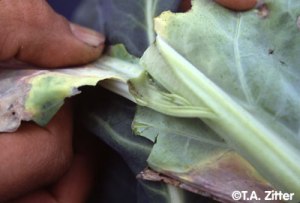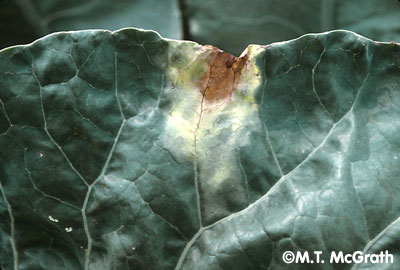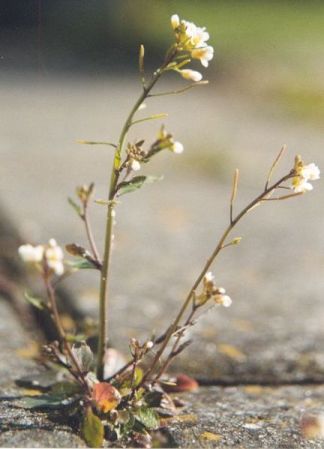Watch out! It loves parasitic relationships...

Xanthomonas campestris (Xcc) is a
commonly known plant pathogen that causes vascular disease,
universally known as black rot. It affects crucifers such
as Brassica and Arabidopsis, which are
particular organisms related to the cabbage and mustards.
It can attack the plants at any time during their life cycle;
time of infection mainly depends on the environmental
conditions. The bacterium infects the plant via leaf
pores, injuries to the plant’s leaves, or through its roots.
The most common way of infection for the bacterial phytopathogen
is to use hydathodes, commonly through the most abundant pore on
the leaf surface, stomata. Infection thrives in warm, wet
weather and increase transimission from plant to plant through
exposing selves to
extreme moist environments, windblown droplets, and transmission
by humans and other animals.



Once infected the crucifers express symptoms beginning with the
yellowing of edge of the leaf, which as the disease persists the
marginal leaf chlorosis continues forming the characteristic
"V”-shaped lesion. Veins within the vascular tissue begin
to darken as the disease becomes systemic. In its advanced
stages, the disease causes full leaf chlorosis, wilting, and
eventually necrosis.

This parasitic relationship that Xcc exhibits with a
wide range of crucifers is also known to infect weeds, including
Arabidopsis thaliana. Through the basis of this
interaction, both Xcc and Arabidopsis thaliana’s
genomes have been sequenced and are recently being used as model
species used in current plant research.


Xanthomonas campestris is identified as a chemoorganotroph,
which is known to get their majority of energy from oxidizing
organic compound commonly obtained from their host’s sugars, fats
and proteins. Xcc is known to be involved in a
parasitic interaction with plants, more precisely crucifers,
allowing them to obtain these organic compounds from the host plant.
In order to acquire energy from the obtained sugars, fats and
proteins Xcc has to use oxygen to oxidize these substrates
which classify Xcc as an obligate aerobe. An obligate
aerobic lifestyle is a common prokaryotic metabolism in which oxygen
is in high demand and needed for these organisms, such as Xcc
to properly undergo cellular respiration. The oxygen that is
required is used as the terminal electron acceptor for the aerobic
respiration process. The use of the
Entener-Doudoroff pathway is the main pathway used to catalyze
glucose to aid in fulfilling the high demand of energy that Xcc
has. Another organism that uses this type of metabolism is
Escherichia coli.
_____________________________________________________________________________________________________
Now that we know where Xcc gets its grub from, it's
important to check out the aid that it and its components hold in
human food production.
-- HOME -- REFERENCES -- CONTACT ME -- MULTIPLE ORGANISMS --